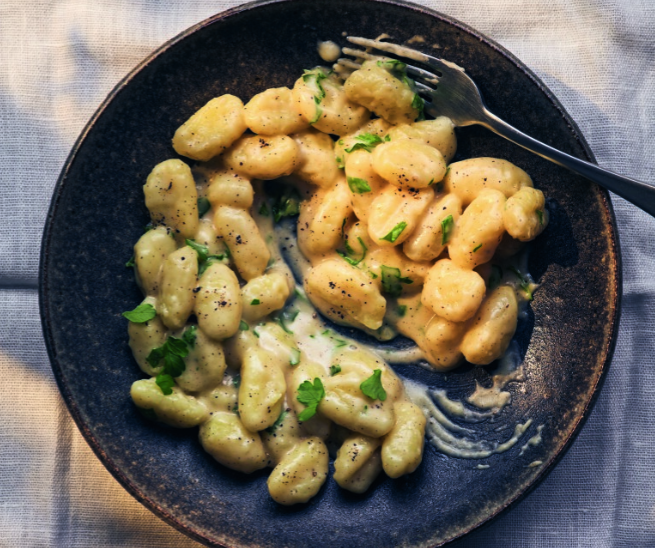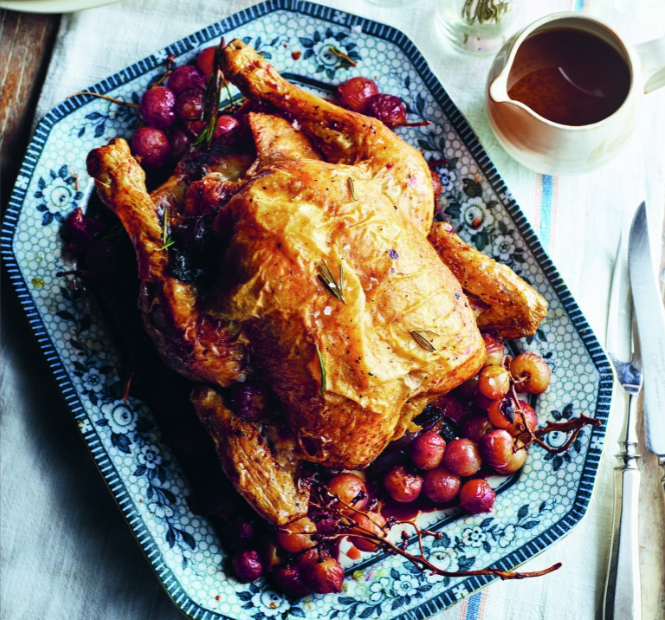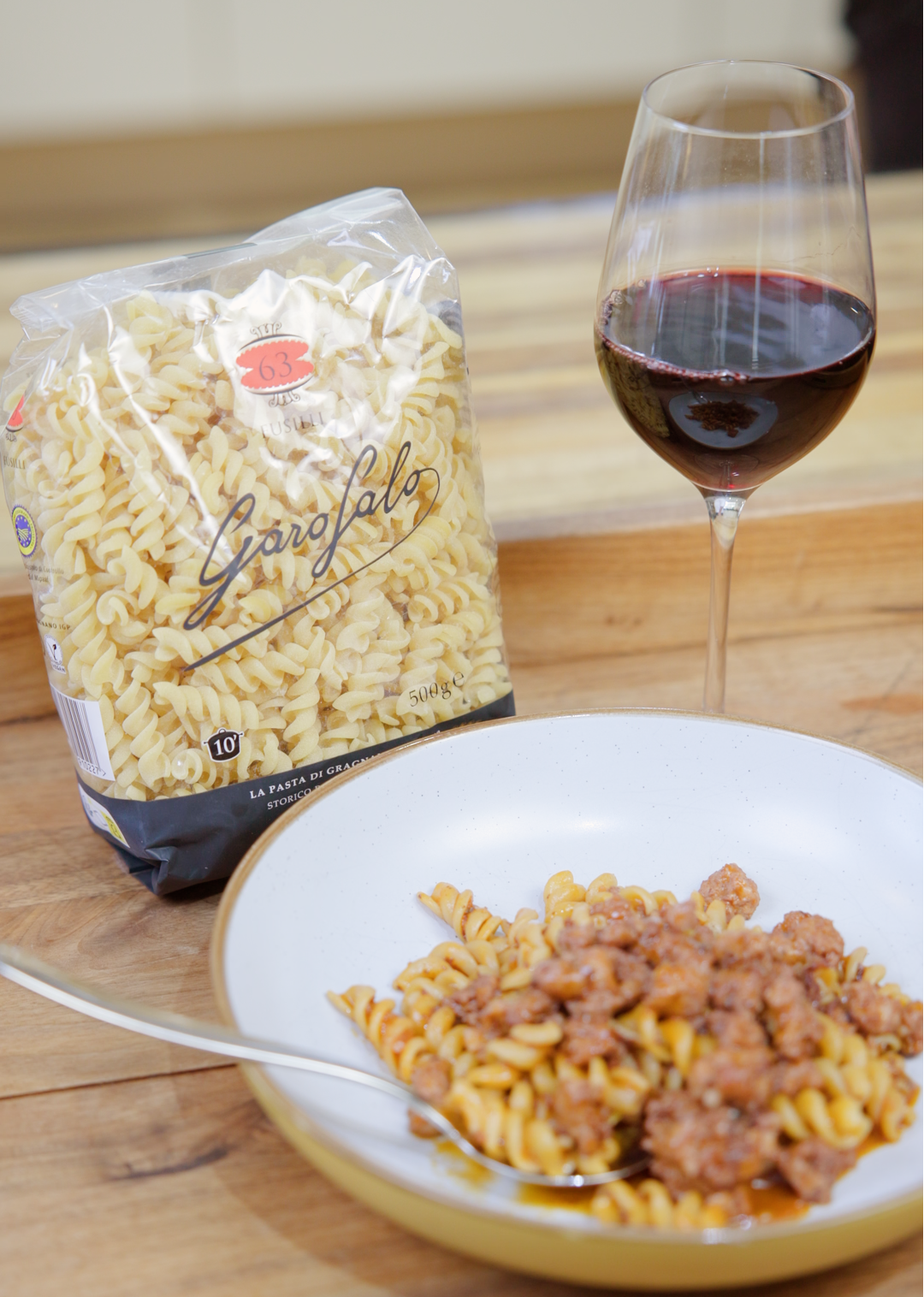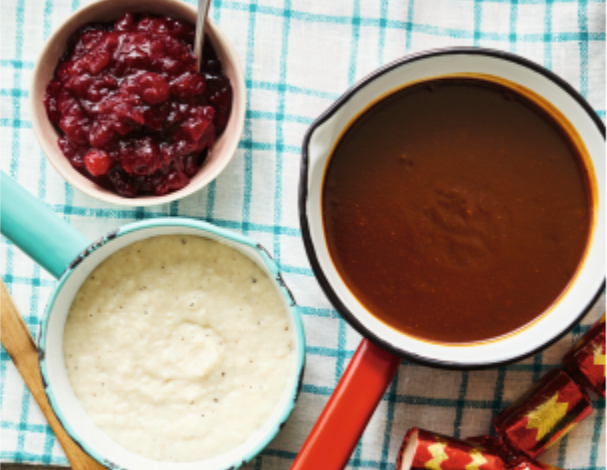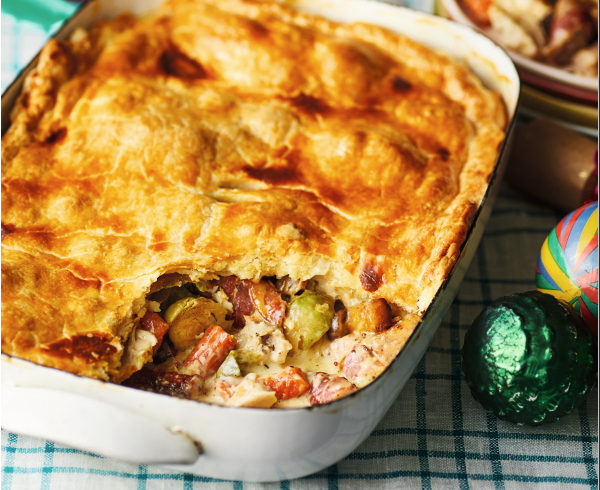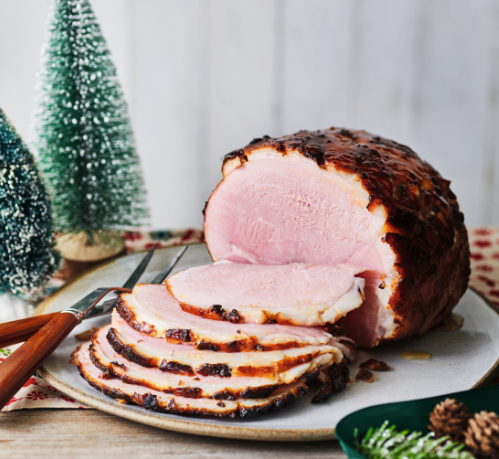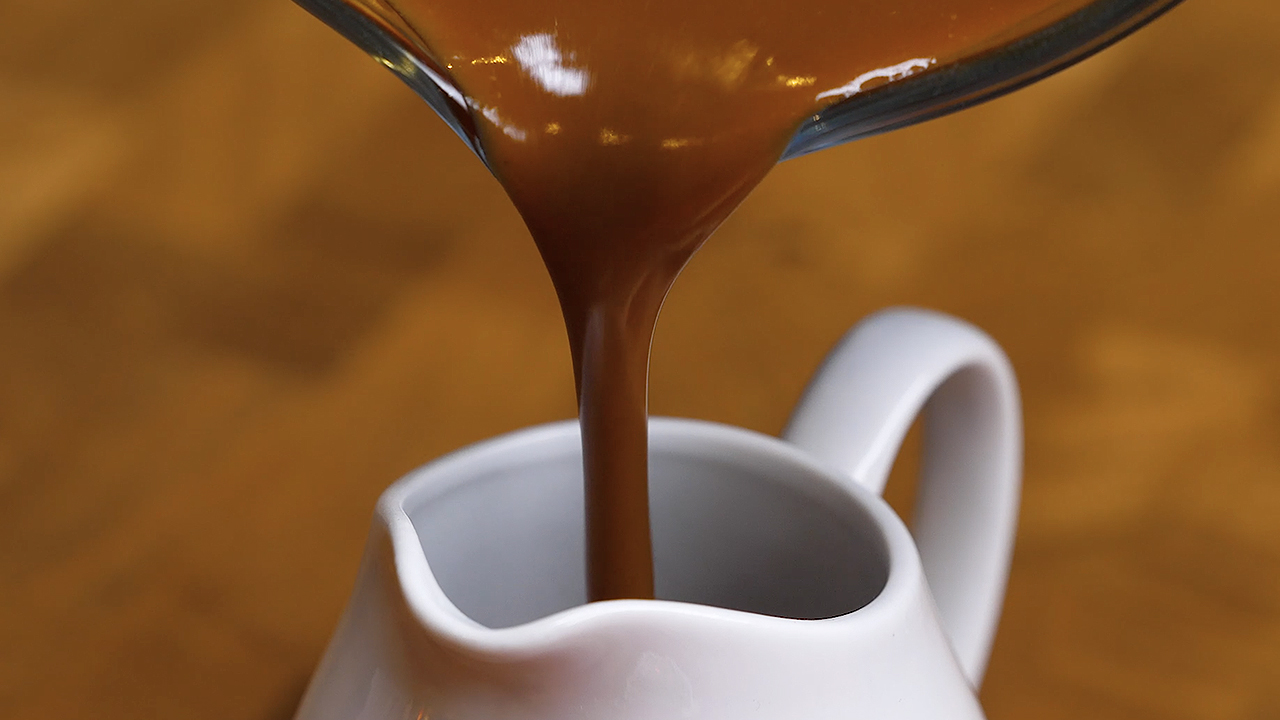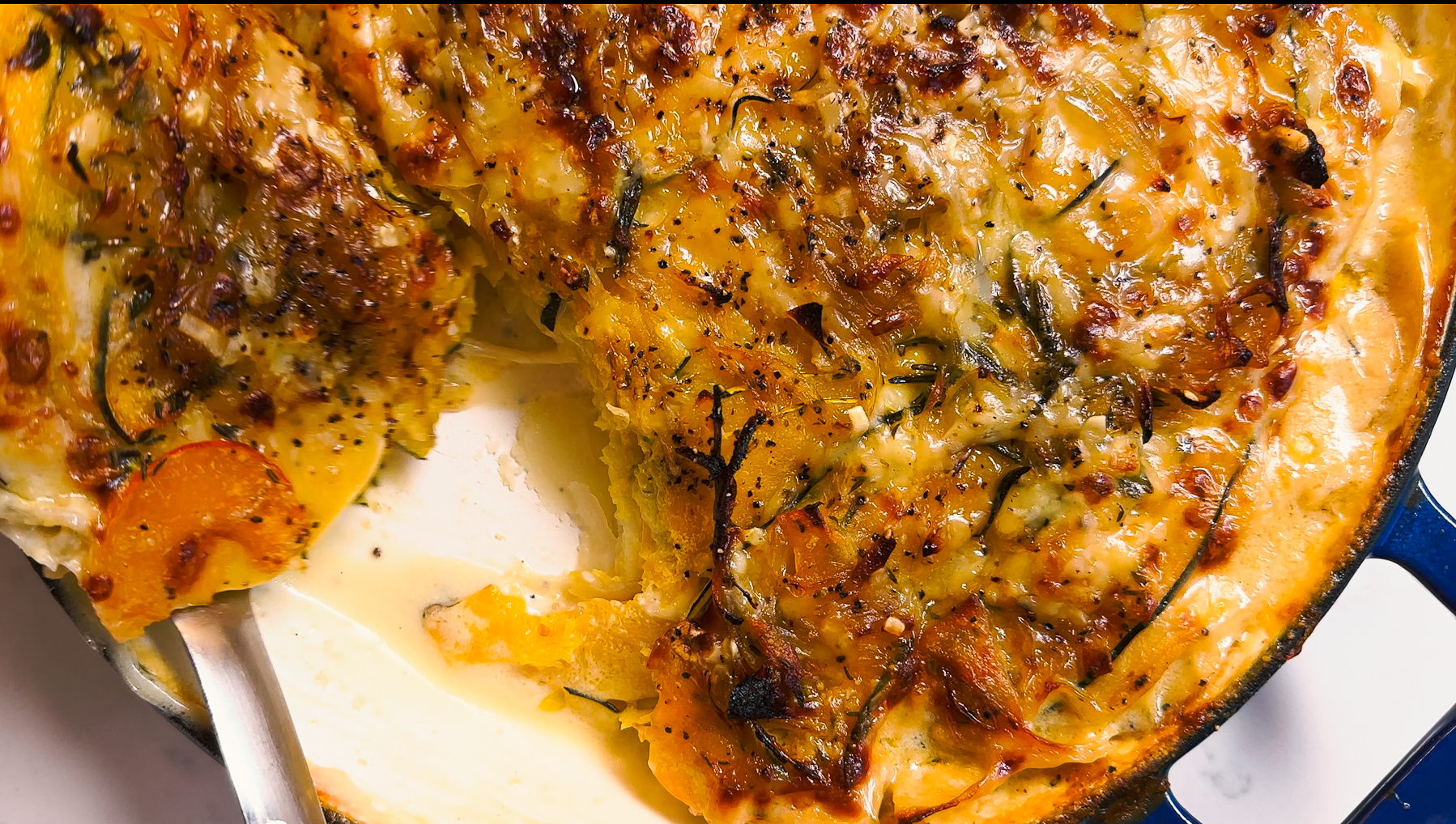Lamb Fillet Roast in Sumac with Saffron Dauphinois
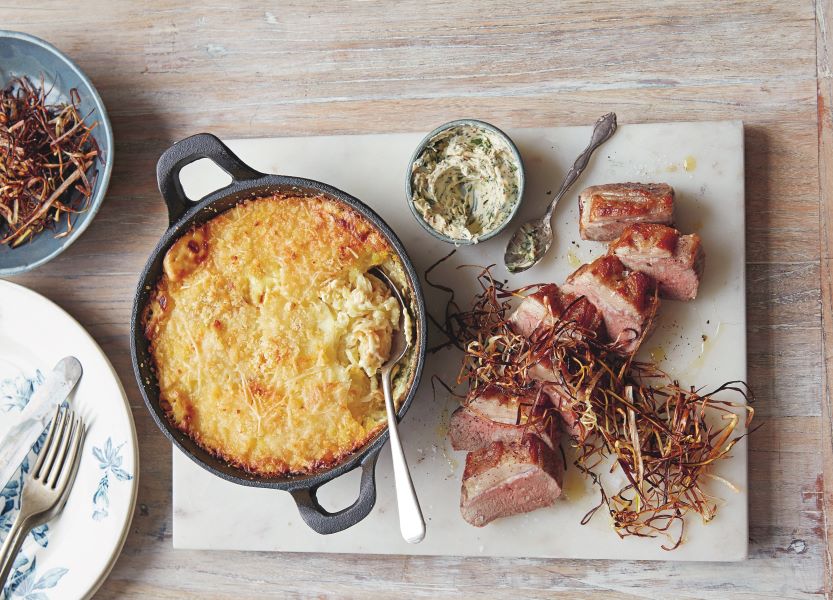
Who says you can't cook a roast dinner for two? This succulent lamb fillet recipe is coated in sumac and mint butter and served with creamy saffron-laced dauphinoise. It's a delicious weekend date night recipe from the former Editor of BBC Good Food
25 minutes prep, 55 minutes cook
Serves 2
Ingredients
For the lamb:
A 220–300g lamb loin fillet
A little oil, for frying
½ tsp ground sumac
For the mint & sumac butter (optional)
25g butter, softened
12 fresh mint leaves, chopped
¼ tsp ground sumac
A little crushed garlic
For the saffron dauphinois:
15g butter, plus extra for the dish
1 small onion, thinly sliced
120ml double cream
A large pinch of saffron threads
A grating of fresh nutmeg
250g potatoes, peeled
40g grated Gruyere
A sprinkling of panko crumbs, or fresh breadcrumbs
For the leek straw (optional):
1 small leek, split, washed and dried
1 tbsp oil
Method
Dry the lamb fillet and season all over. Heat a little oil in a small frying pan and put in the fillet, fat-side down at first, then turning, for 2 minutes in total. Remove to a small roasting tin or pan lined with foil (for easy clean-up) and dust all over with the sumac. The fillet is now ready to cook.
For the saffron dauphinois, heat the butter in a small frying pan and add the onion and seasoning. Fry slowly and gently for 15 minutes, till golden and frizzled. Meanwhile, bring the cream, saffron and nutmeg just to the boil in a medium saucepan, then turn off the heat, season and cover.
Slice the potatoes as thinly as you can (I recommend a mandoline) and add to the cream. Bring the mixture to a simmer, stirring constantly with a rubber spatula to stop the mixture sticking. Butter a shallow, ovenproof dish about 19cm square, with a 300ml capacity – and layer in half the potatoes, followed by all the onion and half the cheese. Add the remaining potatoes, top with the cheese and a few crumbs and bake at 180°C/Fan 160°C /Gas 3 for 30–40 minutes. Check the potatoes are fully cooked and tender by poking with a knife in 3 or 4 different spots. Once done, set aside to cool slightly.
Roast your lamb at 200°C/ Fan 180°C/ Gas 4 for 12–15 minutes. Check doneness by poking with a knife, or if you have a digital thermometer, it should read 54°C (for rare) or 60°C (medium). Fold the foil up around the meat loosely and leave to rest for 5–10 minutes before carving into slices and serving.
To make the mint and sumac butter, if using, mix all the ingredients with salt and pepper, spoon into a small pot or bowl and put in the fridge. Add a spoonful on each portion of lamb when serving.
To make the leek straw, if using, cut off a 4cm section of leek, roughly where the white meets the green. Slice as thinly as you can into matchsticks. (If you wish, boil the remaining leek and serve as a side vegetable.) Shortly before serving, heat the oil in a frying pan, add the leek and cook until golden (the colour of straw). Remove immediately to a piece of kitchen paper towel, before sprinkling with salt and serving on top of the lamb and butter.
Recipe taken from Two’s Company: The Best of Cooking for Couples, Friends & Roommates by Orlando Murrin (Ryland Peters & Small, £18.99) Photography: Clare Winfield
Visit websiteGreat British Food Awards
Tasting videos

3 of the best biscuit and tea pairings
Treat yourself by discovering three decadent ways to match award-winning biscuits with tea
